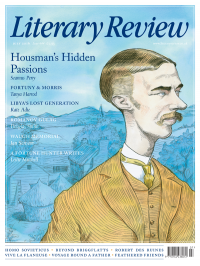Douglas Smith
Russia’s Wild East
The House of the Dead: Siberian Exile under the Tsars
By Daniel Beer
Allen Lane 487pp £30
‘Here was a world all its own, unlike anything else; here were laws unto themselves, ways of dressing unto themselves, manners and customs unto themselves, a house of the living dead, a life unlike anywhere else, with distinct people unlike anyone else.’ So wrote Dostoevsky in Notes from the House of the Dead, a novel based loosely on his imprisonment in a Siberian penal labour camp as punishment for his involvement in the Petrashevsky Circle, a subversive group that met secretly in St Petersburg during the reign of Tsar Nicholas I.
Crammed into flimsy wooden barracks with criminals, thieves and murderers, Dostoevsky endured horrific conditions – bone-chilling cold, lice, fleas, cockroaches, filth and spasms of violence that conspired to destroy human dignity. It was a ‘ceaseless, merciless assault on my soul’, Dostoevsky wrote to his brother after his release: ‘eternal hostility and bickering all around, cursing, cries, din, uproar ... All that for four years!’
Dostoevsky published his Notes in the early 1860s to draw the attention of educated Russians to the appalling conditions of Siberian labour camps. It caused a sensation and became something of an instant classic. ‘I know of no better book in all modern literature,’ Tolstoy declared, ‘and that includes all

Sign Up to our newsletter
Receive free articles, highlights from the archive, news, details of prizes, and much more.@Lit_Review
Follow Literary Review on Twitter
Twitter Feed
It wasn’t until 1825 that Pepys’s diary became available for the first time. How it was eventually decrypted and published is a story of subterfuge and duplicity.
Kate Loveman tells the tale.
Kate Loveman - Publishing Pepys
Kate Loveman: Publishing Pepys
literaryreview.co.uk
Arthur Christopher Benson was a pillar of the Edwardian establishment. He was supremely well connected. As his newly published diaries reveal, he was also riotously indiscreet.
Piers Brendon compares Benson’s journals to others from the 20th century.
Piers Brendon - Land of Dopes & Tories
Piers Brendon: Land of Dopes & Tories - The Benson Diaries: Selections from the Diary of Arthur Christopher Benson by Eamon Duffy & Ronald Hyam (edd)
literaryreview.co.uk
Of the siblings Gwen and Augustus John, it is Augustus who has commanded most attention from collectors and connoisseurs.
Was he really the finer artist, asks Tanya Harrod, or is it time Gwen emerged from her brother’s shadow?
Tanya Harrod - Cut from the Same Canvas
Tanya Harrod: Cut from the Same Canvas - Artists, Siblings, Visionaries: The Lives and Loves of Gwen and Augustus John by Judith Mackrell
literaryreview.co.uk